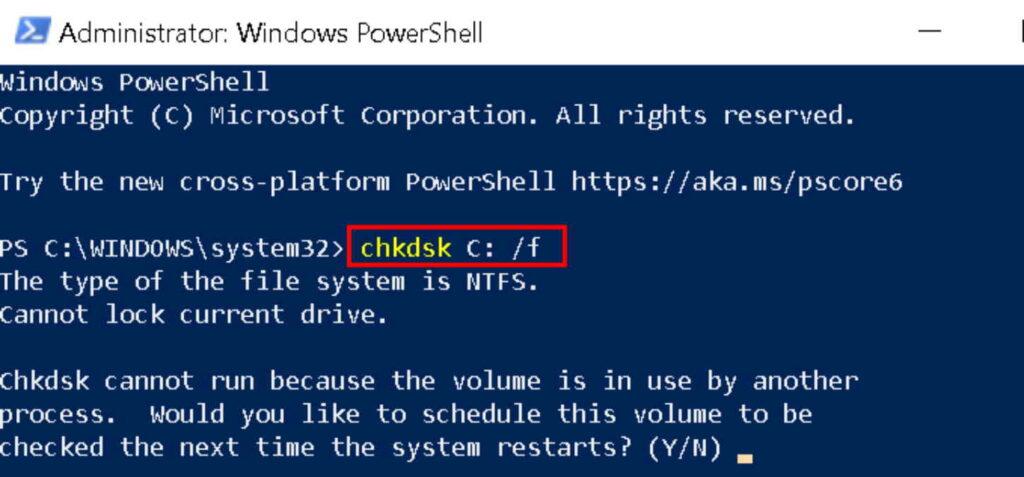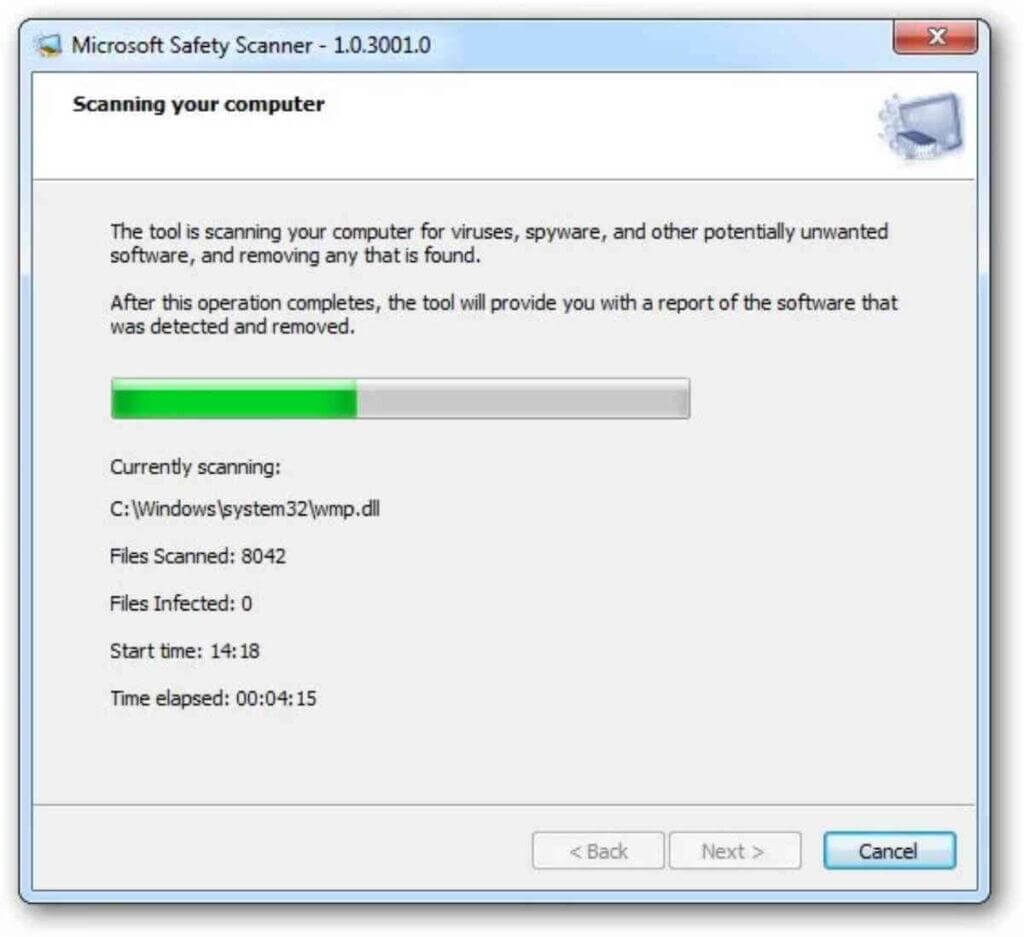How to Fix Windows Backup 0x8078012D Error?
Backing up your important files is a crucial step in ensuring that you don’t lose any data in the event of a system crash or other unforeseen circumstances.
Windows Backup is a built-in tool in Windows that allows users to create backups of their files and settings. However, the backup process can sometimes fail, and users may encounter an error message with the code “0x8078012D”. The error message typically reads, “A shadow copy could not be created. Please check ‘VSS’ and ‘SPP’ application event logs for more information. Details: Insufficient storage available to create either the shadow copy storage file or other shadow copy data.”
This error message can be frustrating, especially if you are trying to create a backup of important data. Fortunately, there are several steps you can take to fix this error and successfully create a backup.
In this blog post, we will discuss the possible causes of the 0x8078012D error and provide you with solutions to fix the problem.
The reason behind the Error Code 0x8078012D
The Windows Backup 0x8078012D error can occur due to a variety of reasons. Here are some of the most common causes:
Insufficient Storage Space: The backup process requires sufficient storage space to create a shadow copy. If your system does not have enough storage space, the backup process may fail, and you may encounter the 0x8078012D error.
Issues with Volume Shadow Copy Service (VSS): VSS is a Windows service that creates snapshots of your system to allow for backup and restoration. If VSS is not working correctly, the backup process may fail, and you may encounter the 0x8078012D error.
Corrupted System Files: If your system files are corrupted, the backup process may fail, and you may encounter the 0x8078012D error.
Conflicts with Third-party Software: Sometimes, conflicts with third-party software installed on your system can interfere with the backup process and cause the 0x8078012D error.
How to Fix the Error 0x8078012D?
Free up Storage Space
As mentioned earlier, the backup process requires sufficient storage space to create a shadow copy. If your system does not have enough storage space, the backup process may fail, and you may encounter the 0x8078012D error. To fix this issue, you can free up some storage space on your system. Here’s how:
- Open File Explorer and navigate to the drive where you are trying to create the backup.
- Right-click on the drive and select “Properties.”
- In the Properties window, click on the “Disk Cleanup” button.
- Select the files you want to delete and click on the “OK” button.
- Wait for the process to complete, and then try to create the backup again.
Restart your PC in Safe Mode
If the following adjustments did not resolve the issue, a particular programme could be to blame. To troubleshoot this, select Clean Boot PC in Windows 10 to start your computer in clean boot mode and identify whether a particular programme is to blame.
Run CHKDSK scan on your Drive
If the following solution does not resolve the issue, you should look into if the issue is connected to the HDD/SSD storage. A CHKDSK (Check Disk) scan enables the detection of faulty logical sectors and their replacement.
To access the WinX menu, use the Windows key + X.
To start PowerShell with administrator rights, select Windows PowerShell (Admin) from the menu. If a UAC prompt appears, select Yes to proceed.

Enter the settings you wish to use for the scan after typing chkdsk X: in the PowerShell window, where X is the drive letter for the partition of your system hard disc that you want to check.
Running a scan without the specified parameters will simply scan the currently chosen drive and will not correct any issues.
Use the command on CMD:
chkdsk C: /f
Or
chkdsk D: /f /xYou can use the following parameters:
/f - Tells CHKDSK to fix any and all errors that it finds
/r - Tells CHKDSK to locate bad sectors on the drive and try to recover any and all readable information from them
/x - Tells CHKDSK to forcefully dismount the selected drive before scanning itWatch for the CHKDSK utility to complete its task. You may keep track of the utility’s advancement at the time of the scan.
While Windows is running on a disc, the CHKDSK tool cannot scan that partition. In this situation, you will be prompted to decide whether you want the programme to run the scan the next time your machine wakes up.
Remove any Third Party Software
It’s conceivable that a false positive is influencing the backup and causing the error if you’re using a third-party security suite or firewall. Turning off the security suite before launching Windows Backup may prevent the error code when generating a backup.
To disable real-time protection, right-click on the antivirus software‘s tray icon and seek the option. If deactivating did not resolve the problem, go to the Programs and Features menu and remove the third-party security programme. This approach shouldn’t be used if Windows Defender is installed because there is no proof that it interferes with the backup service.
Try SFC and DISM scans
The two built-in utility System File Checker (SFC) and Deployment Image Servicing and Management (DISM) are capable of resolving the majority of corruption problems that might result in the 0x8078012D error using Windows Backup.
While DISM employs a feature of Windows Update to replace corrupted instances of Windows files downloaded from the internet, SFC is a local programme that doesn’t need an active internet connection since it uses the locally stored cache to replace corrupted system files.

Open Command Prompt in Administration Mode.
Type sfc /scannow
The next 10-15 minutes will pass as this utility searches for and corrects damaged or missing files and directories.
After this is finished, make careful to inspect the system image for any file corruption. Run the code listed below on the active PowerShell or Command Prompt to do this.
DISM /Online /Cleanup-Image /RestoreHealth
It will also take DISM 10 to 15 minutes to locate and fix any issues with the system image. Wait patiently, and once it’s finished, see whether you can now generate a fresh backup without encountering the 0x8078012D issue or any other problems.
Delete Shark007 Codec
A few users claimed that removing the Shark007 codec from their PCs resolved this problem. This codec has a history of interfering with system backups and returning various error codes, notably 0x8078012D. Whether you do use this tool, stop using it and see if the issue is solved.
- Start by opening Control Panel.
- Locate “View by” and choose Large icons from the drop-down menu.
- By doing this, the Control panel’s programmes will all be visible.
- Look for the Shark007 tool in Programs and Features.
- If it’s there, right-click it and choose “uninstall.”
- Press Uninstall one again if a confirmation box has appeared.
After the software has been properly removed, restart your computer. Now see if your machine still supports the backup you previously generated.
Scan for any Corrupted or Missing Files
You can use Microsoft Safety Scanner to determine whether certain corrupt files are to blame for the error:

- Visit: Microsoft Safety Scanner Download
- Click on the download button.
- Install Safety Scanner by according to the installation guidelines.
- Start the Microsoft Safety Scanner programme.
- Choose Scan Type.
- Tap Full Scan.
- Choose Next.
The infected files will be removed if any virus/corrupted or missing file is found.
Summary
The Windows Backup 0x8078012D error can be frustrating, but it can be fixed by following the solutions mentioned in this blog post. If you are still encountering the error, you may want to try creating the backup using a different backup tool. Remember, backing up your important files is crucial to ensure that you don’t lose any data in the event of a system crash or other unforeseen circumstances. It is always better to be safe than sorry!